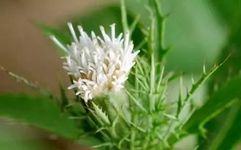

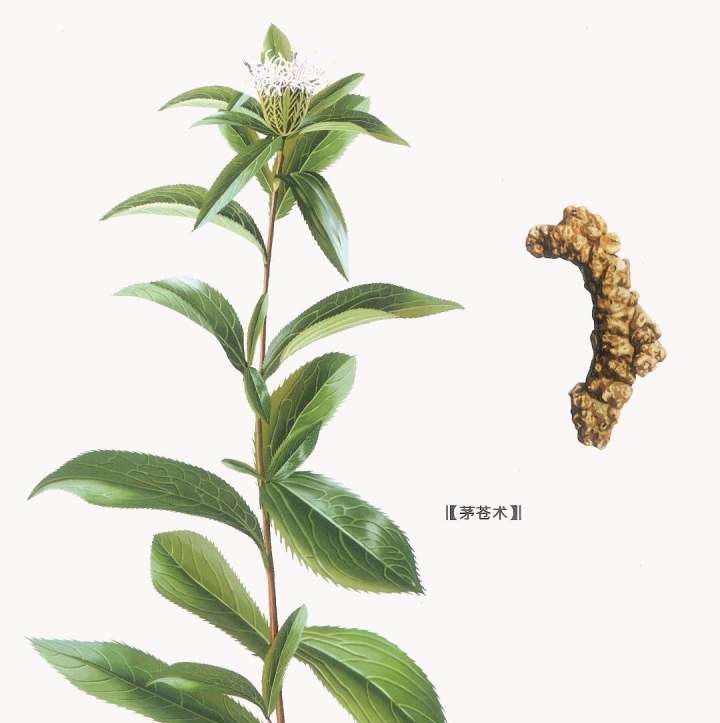
Introduction The efficacy of Cang Zhu (Atractylodes) in treating various conditions originates from the Song Dynasty physician Xu Shuwei. Xu was fond of drinking, which harmed his spleen and stomach. A deficiency in the spleen leads to an inability to transform dampness, while Cang Zhu, being warm and bitter, can awaken the spleen and transform dampness. Xu used powdered Cang Zhu to make pills, and after several months of taking them, his strange illness gradually improved until he was completely cured. This article details the effects and clinical applications of Cang Zhu, packed with valuable information.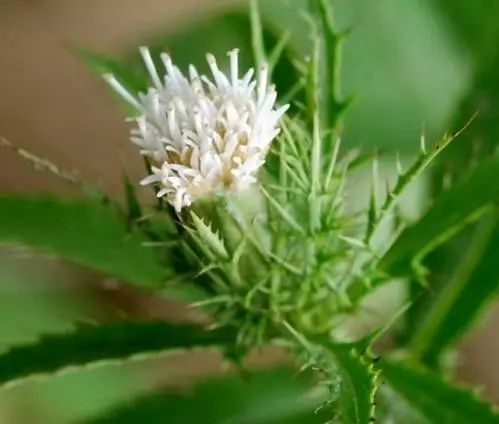 Cang Zhu is pungent and bitter, with a warm nature. It belongs to the spleen, stomach, and liver meridians. Its functions include drying dampness, strengthening the spleen, dispelling wind, and alleviating cold. It is used for abdominal distension, diarrhea, edema, beriberi, rheumatic pain, colds due to wind and cold, and night blindness. Clinically, it is primarily used for fatigue and lethargy caused by dampness obstructing the spleen and stomach; abdominal distension; loss of appetite; nausea and diarrhea; phlegm-dampness; dampness and swelling; exterior conditions with dampness; heavy pain in the head and body; rheumatic conditions; and weakness in the limbs.The Legend of Cang ZhuThe legend of Cang ZhuOnce there was a scholar named Xu, a title given to the renowned physician Xu Shuwei of the Song Dynasty. It is said that in his youth, Xu was exceptionally diligent, studying late into the night. He had a habit of drinking before bed, perhaps believing the saying, “A sip of wine before sleep can prolong life to ninety-nine years!”Years later, he often felt a gurgling in his stomach, experienced pain in his side, and had a reduced appetite. Every ten to fifteen days, he would vomit a bitter and sour gastric fluid. In summer, his left side would not sweat, while his right side would. What kind of strange illness was this? Xu fell into deep thought and sought treatment everywhere.To his dismay, despite consulting many famous doctors, he found no relief, which caused him great distress. Thus, Xu abandoned the belief that “doctors cannot treat themselves” and began to save himself. He carefully analyzed his condition and concluded that his illness was primarily caused by “dampness obstructing the stomach.” Following his principle of “using precise medication,” he selected Cang Zhu as the main herb, using one pound of powdered Cang Zhu, fifteen jujubes, and half a tael of raw sesame oil to make small pills, taking fifty pills daily. He gradually increased the dosage to one hundred to two hundred pills per day. After several months of treatment, his strange illness gradually improved until he was completely cured.The Efficacy of Cang ZhuWhy does Cang Zhu have such efficacy and a unique therapeutic effect on Xu Shuwei’s strange illness? It turns out that Xu’s fondness for drinking harmed his spleen and stomach, leading to a deficiency in the spleen that resulted in an inability to transform dampness. The spleen and stomach are interrelated, causing “dampness to obstruct the stomach,” which led to the gurgling sound in his stomach, the lack of sweating on the left side of his body in summer, and the vomiting of gastric fluid.The spleen belongs to the earth, which loves warmth and fragrant aromas. Cang Zhu has a fragrant aroma, is pungent and warm, and belongs to the spleen and stomach meridians. The medicinal properties align perfectly with the symptoms. Cang Zhu is an aromatic herb that effectively awakens the spleen and transforms dampness. Dampness is a yin pathogen, and warmth can transform it. Xu Shuwei accurately diagnosed his condition and selected the appropriate herb, achieving remarkable results with just one herb. It is also important to note that Xu’s insistence on long-term medication and gradually increasing the dosage was a wise strategy. He understood that dampness is sticky and difficult to eliminate quickly. Only by persisting with long-term medication and gradually increasing the dosage could he enhance the herb’s potency in the body and ultimately conquer dampness.Cang Zhu in Treating Strange Illnesses Treating RheumatismThe primary efficacy of Cang Zhu is to strengthen the spleen and promote the transformation of dampness, and it can also dispel wind and alleviate cold. In Traditional Chinese Medicine, Cang Zhu is commonly used to treat rheumatism. In ancient times, rheumatism was referred to as bi syndrome, believed to be caused by a combination of wind, cold, and dampness. However, in southern regions with higher temperatures, dampness can easily combine with heat, leading to different types of rheumatism. Regardless of the type, Cang Zhu can be used for treatment.
Cang Zhu is pungent and bitter, with a warm nature. It belongs to the spleen, stomach, and liver meridians. Its functions include drying dampness, strengthening the spleen, dispelling wind, and alleviating cold. It is used for abdominal distension, diarrhea, edema, beriberi, rheumatic pain, colds due to wind and cold, and night blindness. Clinically, it is primarily used for fatigue and lethargy caused by dampness obstructing the spleen and stomach; abdominal distension; loss of appetite; nausea and diarrhea; phlegm-dampness; dampness and swelling; exterior conditions with dampness; heavy pain in the head and body; rheumatic conditions; and weakness in the limbs.The Legend of Cang ZhuThe legend of Cang ZhuOnce there was a scholar named Xu, a title given to the renowned physician Xu Shuwei of the Song Dynasty. It is said that in his youth, Xu was exceptionally diligent, studying late into the night. He had a habit of drinking before bed, perhaps believing the saying, “A sip of wine before sleep can prolong life to ninety-nine years!”Years later, he often felt a gurgling in his stomach, experienced pain in his side, and had a reduced appetite. Every ten to fifteen days, he would vomit a bitter and sour gastric fluid. In summer, his left side would not sweat, while his right side would. What kind of strange illness was this? Xu fell into deep thought and sought treatment everywhere.To his dismay, despite consulting many famous doctors, he found no relief, which caused him great distress. Thus, Xu abandoned the belief that “doctors cannot treat themselves” and began to save himself. He carefully analyzed his condition and concluded that his illness was primarily caused by “dampness obstructing the stomach.” Following his principle of “using precise medication,” he selected Cang Zhu as the main herb, using one pound of powdered Cang Zhu, fifteen jujubes, and half a tael of raw sesame oil to make small pills, taking fifty pills daily. He gradually increased the dosage to one hundred to two hundred pills per day. After several months of treatment, his strange illness gradually improved until he was completely cured.The Efficacy of Cang ZhuWhy does Cang Zhu have such efficacy and a unique therapeutic effect on Xu Shuwei’s strange illness? It turns out that Xu’s fondness for drinking harmed his spleen and stomach, leading to a deficiency in the spleen that resulted in an inability to transform dampness. The spleen and stomach are interrelated, causing “dampness to obstruct the stomach,” which led to the gurgling sound in his stomach, the lack of sweating on the left side of his body in summer, and the vomiting of gastric fluid.The spleen belongs to the earth, which loves warmth and fragrant aromas. Cang Zhu has a fragrant aroma, is pungent and warm, and belongs to the spleen and stomach meridians. The medicinal properties align perfectly with the symptoms. Cang Zhu is an aromatic herb that effectively awakens the spleen and transforms dampness. Dampness is a yin pathogen, and warmth can transform it. Xu Shuwei accurately diagnosed his condition and selected the appropriate herb, achieving remarkable results with just one herb. It is also important to note that Xu’s insistence on long-term medication and gradually increasing the dosage was a wise strategy. He understood that dampness is sticky and difficult to eliminate quickly. Only by persisting with long-term medication and gradually increasing the dosage could he enhance the herb’s potency in the body and ultimately conquer dampness.Cang Zhu in Treating Strange Illnesses Treating RheumatismThe primary efficacy of Cang Zhu is to strengthen the spleen and promote the transformation of dampness, and it can also dispel wind and alleviate cold. In Traditional Chinese Medicine, Cang Zhu is commonly used to treat rheumatism. In ancient times, rheumatism was referred to as bi syndrome, believed to be caused by a combination of wind, cold, and dampness. However, in southern regions with higher temperatures, dampness can easily combine with heat, leading to different types of rheumatism. Regardless of the type, Cang Zhu can be used for treatment.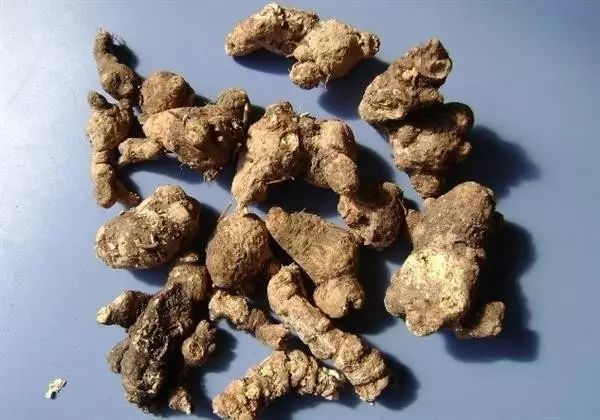 Here is a small prescription: 30 grams of Cang Zhu, 10 grams of Gui Zhi (Cinnamon Twig), and 30 grams of Tou Gu Cao (Hollow Stem Herb). Boil these three herbs together and use the decoction to soak the painful areas, or apply a towel soaked in the herbal juice to the painful areas for effective relief from pain caused by rheumatism. Treating DiabetesDiabetes, known in Traditional Chinese Medicine as Xiao Ke, includes water-damp type, yin deficiency type, and spleen-kidney yang deficiency type. Patients with the water-damp type generally have a whitish tongue with a thin white coating; those with the yin deficiency type mainly present with a red tongue, thin and rapid pulse, thirst, and dryness; while those with the spleen-kidney yang deficiency type exhibit a pale complexion, cold limbs, and abdominal distension.Cang Zhu is particularly suitable for patients with the water-damp type and spleen-kidney yang deficiency type. Here is a specific prescription for treating diabetes—Cang Xuan Zhi Can (Cang Zhu, 30 grams; Xuan Shen (Scrophularia), 15 grams; Black Sesame, 30 grams; and a bit of silkworm cocoon). Decoct and take the herbal mixture. Cang Zhu has a strong medicinal property, while Xuan Shen, which nourishes yin, can balance the drying nature of Cang Zhu. Silkworm cocoon has been used since ancient times to treat diabetes, and black sesame nourishes the kidneys. This combination of four herbs is effective in treating diabetes.One herb, Cang Zhu, guarantees health in the hot summer.In hot weather, people often crave cold drinks, but excessive cold can harm the spleen, leading to symptoms like fatigue, reduced appetite, and sometimes abdominal pain. Conventional wisdom tells us that the body is harmed by dampness and cold! However, in such hot weather, we cannot avoid cold drinks or air conditioning. So how can we enjoy the summer coolness while ensuring our health?Recently, I returned to my hometown, and due to the hot weather, I drank cold beverages, which led to reduced urination, abdominal pain, diarrhea, and fatigue, with over ten bowel movements a day. At that time, I took Li Zhong Wan (Regulate the Middle Pill), but the effect was not significant. The next day, after careful consideration, I used 10 grams of raw Cang Zhu to soak in water. After taking it, I immediately felt my stomach and intestines relax, and my urination improved. That day, my diarrhea was cured, and my energy was restored.One herb, Cang Zhu, is truly miraculous. In the following period, for patients with spleen deficiency and excessive dampness, I recommend using raw Cang Zhu soaked in water as tea, which has shown excellent results.It can be said: “One herb, Cang Zhu, guarantees health in the hot summer!”Discussion on Cang Zhu’s Role in Strengthening the Spleen and Eliminating DampnessYuan Dynasty physician Zhu Zhenheng stated: “Cang Zhu treats dampness, effective in all areas, and can resolve various stagnations, including phlegm, fire, dampness, food, qi, and blood stagnation. All these conditions arise from improper transformation, leading to stagnation in the middle burner. Therefore, the herb must facilitate both ascending and descending actions. To ascend, one must first descend; to descend, one must first ascend. Thus, Cang Zhu, belonging to the foot Yangming stomach meridian, with its pungent and strong flavor, strengthens the stomach and spleen, promoting the transformation of food and qi, can directly enter various herbs…” This is indeed profound insight. Jin Dynasty physician Liu Shouzheng remarked: “Cang Zhu is a herb that scholars should pay attention to.” This also speaks to its broad efficacy. In my clinical practice, I have summarized four uses of this herb.The functions of the body’s organs depend on the spleen and stomach’s ability to transport and transform the essence of food and fluids. When the spleen is strong, all organs are healthy; when the spleen is weak, all organs are also weak. Hence, there is a saying that “the spleen is the foundation of postnatal life.” Cang Zhu dries dampness without harming yin; when dampness is removed, the spleen becomes healthy, and when the spleen is healthy, dampness is transformed. Therefore, in treating chronic diseases, the principle of “the spleen governs the four organs” is paramount, using Cang Zhu as the monarch herb to invigorate the source of transformation and restore vitality. For conditions like organ prolapse, hypokalemia, emphysema, and coronary heart disease, Cang Zhu is effective, especially in treating elderly patients with spleen and stomach diseases.
Here is a small prescription: 30 grams of Cang Zhu, 10 grams of Gui Zhi (Cinnamon Twig), and 30 grams of Tou Gu Cao (Hollow Stem Herb). Boil these three herbs together and use the decoction to soak the painful areas, or apply a towel soaked in the herbal juice to the painful areas for effective relief from pain caused by rheumatism. Treating DiabetesDiabetes, known in Traditional Chinese Medicine as Xiao Ke, includes water-damp type, yin deficiency type, and spleen-kidney yang deficiency type. Patients with the water-damp type generally have a whitish tongue with a thin white coating; those with the yin deficiency type mainly present with a red tongue, thin and rapid pulse, thirst, and dryness; while those with the spleen-kidney yang deficiency type exhibit a pale complexion, cold limbs, and abdominal distension.Cang Zhu is particularly suitable for patients with the water-damp type and spleen-kidney yang deficiency type. Here is a specific prescription for treating diabetes—Cang Xuan Zhi Can (Cang Zhu, 30 grams; Xuan Shen (Scrophularia), 15 grams; Black Sesame, 30 grams; and a bit of silkworm cocoon). Decoct and take the herbal mixture. Cang Zhu has a strong medicinal property, while Xuan Shen, which nourishes yin, can balance the drying nature of Cang Zhu. Silkworm cocoon has been used since ancient times to treat diabetes, and black sesame nourishes the kidneys. This combination of four herbs is effective in treating diabetes.One herb, Cang Zhu, guarantees health in the hot summer.In hot weather, people often crave cold drinks, but excessive cold can harm the spleen, leading to symptoms like fatigue, reduced appetite, and sometimes abdominal pain. Conventional wisdom tells us that the body is harmed by dampness and cold! However, in such hot weather, we cannot avoid cold drinks or air conditioning. So how can we enjoy the summer coolness while ensuring our health?Recently, I returned to my hometown, and due to the hot weather, I drank cold beverages, which led to reduced urination, abdominal pain, diarrhea, and fatigue, with over ten bowel movements a day. At that time, I took Li Zhong Wan (Regulate the Middle Pill), but the effect was not significant. The next day, after careful consideration, I used 10 grams of raw Cang Zhu to soak in water. After taking it, I immediately felt my stomach and intestines relax, and my urination improved. That day, my diarrhea was cured, and my energy was restored.One herb, Cang Zhu, is truly miraculous. In the following period, for patients with spleen deficiency and excessive dampness, I recommend using raw Cang Zhu soaked in water as tea, which has shown excellent results.It can be said: “One herb, Cang Zhu, guarantees health in the hot summer!”Discussion on Cang Zhu’s Role in Strengthening the Spleen and Eliminating DampnessYuan Dynasty physician Zhu Zhenheng stated: “Cang Zhu treats dampness, effective in all areas, and can resolve various stagnations, including phlegm, fire, dampness, food, qi, and blood stagnation. All these conditions arise from improper transformation, leading to stagnation in the middle burner. Therefore, the herb must facilitate both ascending and descending actions. To ascend, one must first descend; to descend, one must first ascend. Thus, Cang Zhu, belonging to the foot Yangming stomach meridian, with its pungent and strong flavor, strengthens the stomach and spleen, promoting the transformation of food and qi, can directly enter various herbs…” This is indeed profound insight. Jin Dynasty physician Liu Shouzheng remarked: “Cang Zhu is a herb that scholars should pay attention to.” This also speaks to its broad efficacy. In my clinical practice, I have summarized four uses of this herb.The functions of the body’s organs depend on the spleen and stomach’s ability to transport and transform the essence of food and fluids. When the spleen is strong, all organs are healthy; when the spleen is weak, all organs are also weak. Hence, there is a saying that “the spleen is the foundation of postnatal life.” Cang Zhu dries dampness without harming yin; when dampness is removed, the spleen becomes healthy, and when the spleen is healthy, dampness is transformed. Therefore, in treating chronic diseases, the principle of “the spleen governs the four organs” is paramount, using Cang Zhu as the monarch herb to invigorate the source of transformation and restore vitality. For conditions like organ prolapse, hypokalemia, emphysema, and coronary heart disease, Cang Zhu is effective, especially in treating elderly patients with spleen and stomach diseases.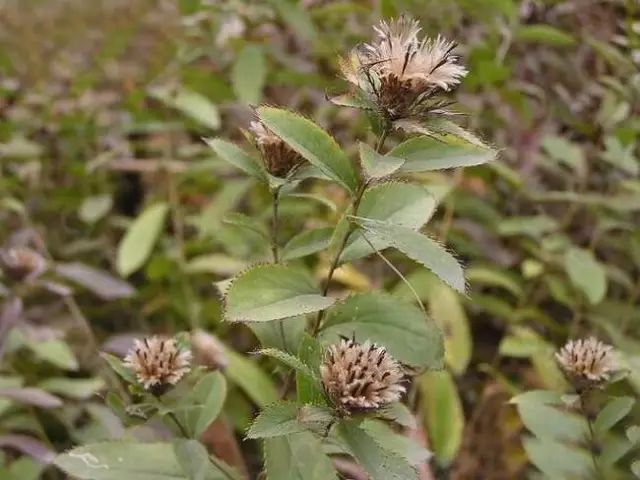 Ancient sages have said, “It is better to strengthen the spleen than to nourish it; it is better to invigorate the spleen than to strengthen it.” When the spleen is invigorated, qi and blood can be generated. Therefore, ancient practitioners often used cooked Rehmannia with cardamom to nourish blood, and in rich tonifying formulas, they would add Cang Zhu to prevent the cloying nature of tonics and promote the absorption of the herbs. For example, in Gui Pi Tang (Restore the Spleen Decoction) and Bu Zhong Yi Qi Tang (Tonify the Middle and Augment Qi Decoction), Cang Zhu is added to prevent fullness after taking the medicine. I once treated a patient with aplastic anemia who had previously taken strong tonics without improvement. After adding Cang Zhu, the results were remarkable. It is also used in cold and cool herbs to prevent stomach damage, which is a clever application.Phlegm and blood stasis are both sticky yin pathogens, so to transform phlegm and stasis, one must rely on the movement of yang qi. Cang Zhu excels in invigorating the spleen and eliminating phlegm-dampness. To transform stasis, one must move qi, but based on the principle that phlegm and stasis share the same origin and that the spleen governs the four organs, Cang Zhu is often added to accelerate the effect when stasis has long been stagnant. For example, using Cang Zhu in Ze Xie Tang (Alisma Decoction) to treat ear-related dizziness, and in Ling Gui Zhu Gan Tang (Poria, Cinnamon, Atractylodes, and Licorice Decoction) to prevent and treat asthma, or using it alone to treat phlegm-dampness, diabetes, and night blindness, has proven effective.According to the principle of “the liver transmits to the spleen, and one must first strengthen the spleen” in treating the spleen to prevent liver diseases, I have also gained much. I recall in the autumn of 1962, I had an acute liver disease. Besides intravenous fluids, I also took tonics, which caused dampness to accumulate, leading to foamy phlegm and elevated transaminases. I then applied Cang Zhu combined with Wu Ling San (Five-Ingredient Powder with Poria) and recovered in a month. I realized that strengthening the spleen is more effective than tonifying the liver. Over the years, I have treated many liver diseases with this principle, especially during the outbreak of hepatitis A in Shanghai, where I prescribed Cang Zhu slices to discharged patients with satisfactory results.The application of Cang Zhu should be skillfully combined. For those with severe cold-dampness, it is often used with Fu Zi (Aconite) and Rou Gui (Cinnamon); for damp-heat obstruction, it can be combined with Gan Lu Xiao Du Dan (Sweet Dew Detoxifying Pill) and Huang Lian (Coptis); for damage to stomach yin, it can be paired with Shi Hu (Dendrobium), Xuan Shen, and Mai Dong (Ophiopogon); for damp-heat flowing through the meridians, it can be combined with Shi Gao (Gypsum) and Gui Zhi; for liver yang with dampness, and symptoms like blurred vision and dry stools, it can be combined with black sesame; for qi deficiency, it can be supplemented with Huang Qi (Astragalus) and Sheng Ma (Cimicifuga). This has become a common practice.(Welcome to follow us: Systematic Medical Theory)Zhu Danxi stated: “When qi and blood are harmonized, no disease arises; when there is stagnation, various diseases occur.” He created the Jiu Juan Wan (Nine-Section Pill), using Cang Zhu and Chuan Xiong (Szechuan Lovage) to soothe the liver, move qi, invigorate blood, and transform stasis, demonstrating a method for treating stagnation. I believe that all diseases arise from stagnation. Although the “Five Stagnations” are mentioned in the Huangdi Neijing (Yellow Emperor’s Classic of Internal Medicine), stagnation of wood qi is the most common. The liver governs the smooth flow of qi and blood throughout the body, regulating mental activity, the transformation of food and fluids, the distribution of qi and blood, and the metabolism of water and fluids. Once the liver is out of balance, yin and yang become disordered, leading to qi stagnation, blood stasis, phlegm formation, fire rise, and wind movement, resulting in various diseases. Wei Yuhuang stated, “The liver is the thief of all diseases,” which is indeed profound. Cang Zhu has a fragrant aroma, not only excelling in drying dampness but also in moving qi and relieving stagnation. When paired with Chuan Xiong, it harmonizes qi and blood, making it effective for various difficult-to-treat diseases, achieving the effect of “smoothing the blood and qi, allowing them to flow harmoniously, leading to peace.”Case Study 1Li ××, male, 71 years old, after three strokes, exhibited cognitive impairment, remained silent all day, had a pale complexion, dry and wrinkled skin, and experienced difficulty urinating. His tongue was swollen with a purple coating, and his pulse was wiry and rapid. EEG showed focal slow waves, and cerebral blood flow studies indicated reduced elasticity in bilateral cerebral vessels, with CT scans showing mild brain atrophy. The diagnosis was qi deficiency and blood stasis, with stasis obstructing the clear yang. The treatment should focus on invigorating qi and activating blood.Medicinal formula: Huang Qi (Astragalus) 15g, Chuan Xiong (Szechuan Lovage) 9g, Sheng Pu Huang (Cattail Pollen) 15g, Bai Zhu (Atractylodes) 9g, Chi Shao (Red Peony) 9g, Chuan Niu Xi (Szechuan Achyranthes) 9g, Chuan Duan (Breakstone) 9g, Du Zhong (Eucommia) 9g, Hai Zao (Sargassum) 9g, Tong Tian Cao (Creeping Thyme) 9g, Chang Pu (Acorus) 6g, and Shui Zhi (Leech) 3g. After taking the medicine for half a month, cognitive impairment improved, and the patient could manage basic daily activities. Continued treatment for six months led to significant improvement in his condition.The spleen should ascend to be healthy, and the stomach should descend to be harmonious. The spleen and stomach coexist in the middle burner, which is the pivot of ascending and descending qi mechanisms. When the spleen qi ascends, the stomach qi harmonizes and descends, allowing for the proper transformation of food and fluids. If the spleen and stomach are not harmonious, clear qi cannot rise, and turbid qi cannot descend, leading to symptoms like nausea, abdominal distension, and diarrhea. The ancient sage Li Dongyuan founded the Spleen and Stomach School, creating formulas like Sheng Yang Yi Wei Tang (Lift Yang and Benefit the Stomach Decoction) and Qing Shu Yi Qi Tang (Clear Summer Heat and Augment Qi Decoction), advocating the principle of “ascending the clear and descending the turbid,” which I greatly admire and have developed further. In clinical practice, I often combine Sheng Ma (Cimicifuga) and Cang Zhu to regulate the qi mechanism of the spleen and stomach. The Ben Cao Jing (Compendium of Materia Medica) states that Sheng Ma “expels epidemic and pestilential qi, alleviating abdominal pain,” which is used to elevate spleen qi, while Cang Zhu, being bitter and drying, helps descend stomach qi. This combination of ascending and descending clears the turbid and promotes the clear, effectively treating nausea and other symptoms. If there is damp-heat obstruction, it can be supplemented with Zuo Jin Wan (Left Metal Pill) or Wen Dan Tang (Warm Gallbladder Decoction); if there is internal cold-dampness, it can be combined with Yu Shu Dan (Jade Pivot Pill) or Xuan Fu Dai Zhe Tang (Xuanfu and Dai Zhe Decoction).Case Study 2Zhao ×, male, 68 years old, has suffered from gastric distension and pain for many years. Gastroscopy revealed “chronic superficial gastritis with erosion.” In the past two months, abdominal distension worsened, and he frequently experienced nausea. He had previously taken “Motilium” and “Gastric Recovery” without improvement. Currently, the patient has abdominal fullness, a tendency to vomit, and loose stools. His pulse is thin, and his tongue is thin with a white greasy coating, indicating that the spleen qi is not ascending and the stomach qi is not harmonizing.Medicinal formula: Stir-fried Sheng Ma 4.5g, Cang Zhu and Bai Zhu (each) 9g, Jiang Ban Xia (Pinellia) 9g, Zhi Shi (Bitter Orange) 9g, Xuan Fu Hua (Inula) 9g, Dai Zhe Shi (Prepared Hematite) 30g, Chen Pi (Aged Tangerine Peel) 6g, and Bi Cheng Qie (Bitter Orange) 2.4g. After taking one dose, nausea disappeared, and after taking seven doses, all symptoms resolved.Cang Zhu and Bai Zhu are two herbs that Dr. Yan Dexin favored. Cang Zhu contains volatile VA and VD, which can reduce the side effects of cold herbs like abdominal pain and diarrhea, and can mitigate the cloying effects of tonics like Huang Qi, Shu Di Huang (Cooked Rehmannia), and Dang Gui (Angelica). Cang Zhu excels in the middle burner, surpassing Bai Zhu, and can also enhance the bioavailability of tonics.Chongqing is a region with heavy dampness, and due to the local cuisine being rich, phlegm and dampness can easily develop. Therefore, I personally advocate for Dr. Yan Dexin’s use of these two herbs. Cang Zhu focuses on dispelling dampness, while Bai Zhu emphasizes strengthening and warming the spleen. The degree and focus of their effects on spleen yang differ, so they should be used flexibly.
Ancient sages have said, “It is better to strengthen the spleen than to nourish it; it is better to invigorate the spleen than to strengthen it.” When the spleen is invigorated, qi and blood can be generated. Therefore, ancient practitioners often used cooked Rehmannia with cardamom to nourish blood, and in rich tonifying formulas, they would add Cang Zhu to prevent the cloying nature of tonics and promote the absorption of the herbs. For example, in Gui Pi Tang (Restore the Spleen Decoction) and Bu Zhong Yi Qi Tang (Tonify the Middle and Augment Qi Decoction), Cang Zhu is added to prevent fullness after taking the medicine. I once treated a patient with aplastic anemia who had previously taken strong tonics without improvement. After adding Cang Zhu, the results were remarkable. It is also used in cold and cool herbs to prevent stomach damage, which is a clever application.Phlegm and blood stasis are both sticky yin pathogens, so to transform phlegm and stasis, one must rely on the movement of yang qi. Cang Zhu excels in invigorating the spleen and eliminating phlegm-dampness. To transform stasis, one must move qi, but based on the principle that phlegm and stasis share the same origin and that the spleen governs the four organs, Cang Zhu is often added to accelerate the effect when stasis has long been stagnant. For example, using Cang Zhu in Ze Xie Tang (Alisma Decoction) to treat ear-related dizziness, and in Ling Gui Zhu Gan Tang (Poria, Cinnamon, Atractylodes, and Licorice Decoction) to prevent and treat asthma, or using it alone to treat phlegm-dampness, diabetes, and night blindness, has proven effective.According to the principle of “the liver transmits to the spleen, and one must first strengthen the spleen” in treating the spleen to prevent liver diseases, I have also gained much. I recall in the autumn of 1962, I had an acute liver disease. Besides intravenous fluids, I also took tonics, which caused dampness to accumulate, leading to foamy phlegm and elevated transaminases. I then applied Cang Zhu combined with Wu Ling San (Five-Ingredient Powder with Poria) and recovered in a month. I realized that strengthening the spleen is more effective than tonifying the liver. Over the years, I have treated many liver diseases with this principle, especially during the outbreak of hepatitis A in Shanghai, where I prescribed Cang Zhu slices to discharged patients with satisfactory results.The application of Cang Zhu should be skillfully combined. For those with severe cold-dampness, it is often used with Fu Zi (Aconite) and Rou Gui (Cinnamon); for damp-heat obstruction, it can be combined with Gan Lu Xiao Du Dan (Sweet Dew Detoxifying Pill) and Huang Lian (Coptis); for damage to stomach yin, it can be paired with Shi Hu (Dendrobium), Xuan Shen, and Mai Dong (Ophiopogon); for damp-heat flowing through the meridians, it can be combined with Shi Gao (Gypsum) and Gui Zhi; for liver yang with dampness, and symptoms like blurred vision and dry stools, it can be combined with black sesame; for qi deficiency, it can be supplemented with Huang Qi (Astragalus) and Sheng Ma (Cimicifuga). This has become a common practice.(Welcome to follow us: Systematic Medical Theory)Zhu Danxi stated: “When qi and blood are harmonized, no disease arises; when there is stagnation, various diseases occur.” He created the Jiu Juan Wan (Nine-Section Pill), using Cang Zhu and Chuan Xiong (Szechuan Lovage) to soothe the liver, move qi, invigorate blood, and transform stasis, demonstrating a method for treating stagnation. I believe that all diseases arise from stagnation. Although the “Five Stagnations” are mentioned in the Huangdi Neijing (Yellow Emperor’s Classic of Internal Medicine), stagnation of wood qi is the most common. The liver governs the smooth flow of qi and blood throughout the body, regulating mental activity, the transformation of food and fluids, the distribution of qi and blood, and the metabolism of water and fluids. Once the liver is out of balance, yin and yang become disordered, leading to qi stagnation, blood stasis, phlegm formation, fire rise, and wind movement, resulting in various diseases. Wei Yuhuang stated, “The liver is the thief of all diseases,” which is indeed profound. Cang Zhu has a fragrant aroma, not only excelling in drying dampness but also in moving qi and relieving stagnation. When paired with Chuan Xiong, it harmonizes qi and blood, making it effective for various difficult-to-treat diseases, achieving the effect of “smoothing the blood and qi, allowing them to flow harmoniously, leading to peace.”Case Study 1Li ××, male, 71 years old, after three strokes, exhibited cognitive impairment, remained silent all day, had a pale complexion, dry and wrinkled skin, and experienced difficulty urinating. His tongue was swollen with a purple coating, and his pulse was wiry and rapid. EEG showed focal slow waves, and cerebral blood flow studies indicated reduced elasticity in bilateral cerebral vessels, with CT scans showing mild brain atrophy. The diagnosis was qi deficiency and blood stasis, with stasis obstructing the clear yang. The treatment should focus on invigorating qi and activating blood.Medicinal formula: Huang Qi (Astragalus) 15g, Chuan Xiong (Szechuan Lovage) 9g, Sheng Pu Huang (Cattail Pollen) 15g, Bai Zhu (Atractylodes) 9g, Chi Shao (Red Peony) 9g, Chuan Niu Xi (Szechuan Achyranthes) 9g, Chuan Duan (Breakstone) 9g, Du Zhong (Eucommia) 9g, Hai Zao (Sargassum) 9g, Tong Tian Cao (Creeping Thyme) 9g, Chang Pu (Acorus) 6g, and Shui Zhi (Leech) 3g. After taking the medicine for half a month, cognitive impairment improved, and the patient could manage basic daily activities. Continued treatment for six months led to significant improvement in his condition.The spleen should ascend to be healthy, and the stomach should descend to be harmonious. The spleen and stomach coexist in the middle burner, which is the pivot of ascending and descending qi mechanisms. When the spleen qi ascends, the stomach qi harmonizes and descends, allowing for the proper transformation of food and fluids. If the spleen and stomach are not harmonious, clear qi cannot rise, and turbid qi cannot descend, leading to symptoms like nausea, abdominal distension, and diarrhea. The ancient sage Li Dongyuan founded the Spleen and Stomach School, creating formulas like Sheng Yang Yi Wei Tang (Lift Yang and Benefit the Stomach Decoction) and Qing Shu Yi Qi Tang (Clear Summer Heat and Augment Qi Decoction), advocating the principle of “ascending the clear and descending the turbid,” which I greatly admire and have developed further. In clinical practice, I often combine Sheng Ma (Cimicifuga) and Cang Zhu to regulate the qi mechanism of the spleen and stomach. The Ben Cao Jing (Compendium of Materia Medica) states that Sheng Ma “expels epidemic and pestilential qi, alleviating abdominal pain,” which is used to elevate spleen qi, while Cang Zhu, being bitter and drying, helps descend stomach qi. This combination of ascending and descending clears the turbid and promotes the clear, effectively treating nausea and other symptoms. If there is damp-heat obstruction, it can be supplemented with Zuo Jin Wan (Left Metal Pill) or Wen Dan Tang (Warm Gallbladder Decoction); if there is internal cold-dampness, it can be combined with Yu Shu Dan (Jade Pivot Pill) or Xuan Fu Dai Zhe Tang (Xuanfu and Dai Zhe Decoction).Case Study 2Zhao ×, male, 68 years old, has suffered from gastric distension and pain for many years. Gastroscopy revealed “chronic superficial gastritis with erosion.” In the past two months, abdominal distension worsened, and he frequently experienced nausea. He had previously taken “Motilium” and “Gastric Recovery” without improvement. Currently, the patient has abdominal fullness, a tendency to vomit, and loose stools. His pulse is thin, and his tongue is thin with a white greasy coating, indicating that the spleen qi is not ascending and the stomach qi is not harmonizing.Medicinal formula: Stir-fried Sheng Ma 4.5g, Cang Zhu and Bai Zhu (each) 9g, Jiang Ban Xia (Pinellia) 9g, Zhi Shi (Bitter Orange) 9g, Xuan Fu Hua (Inula) 9g, Dai Zhe Shi (Prepared Hematite) 30g, Chen Pi (Aged Tangerine Peel) 6g, and Bi Cheng Qie (Bitter Orange) 2.4g. After taking one dose, nausea disappeared, and after taking seven doses, all symptoms resolved.Cang Zhu and Bai Zhu are two herbs that Dr. Yan Dexin favored. Cang Zhu contains volatile VA and VD, which can reduce the side effects of cold herbs like abdominal pain and diarrhea, and can mitigate the cloying effects of tonics like Huang Qi, Shu Di Huang (Cooked Rehmannia), and Dang Gui (Angelica). Cang Zhu excels in the middle burner, surpassing Bai Zhu, and can also enhance the bioavailability of tonics.Chongqing is a region with heavy dampness, and due to the local cuisine being rich, phlegm and dampness can easily develop. Therefore, I personally advocate for Dr. Yan Dexin’s use of these two herbs. Cang Zhu focuses on dispelling dampness, while Bai Zhu emphasizes strengthening and warming the spleen. The degree and focus of their effects on spleen yang differ, so they should be used flexibly.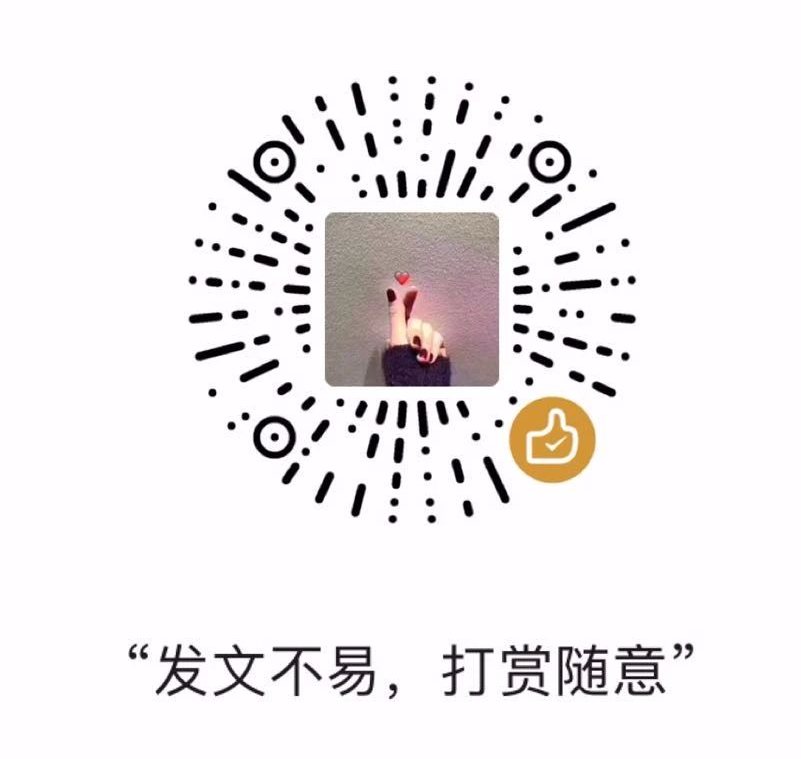

Famous Doctors and Famous Formulas: Hua Zhi Tang by Shen Shaogong: A formula that can almost universally treat pediatric diseases, a stinky herb that is the “nemesis” for treating pneumonia, cough, and viscous phlegm, favored by famous doctors.


Image and text sourced from the internet. If there are copyright issues with the reprint, please contact us for deletion.
Click “Read the original text“↙ to see more exciting content.

